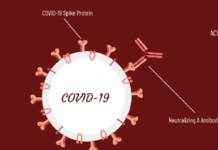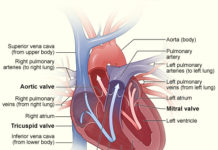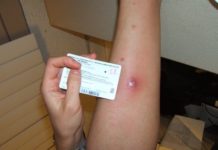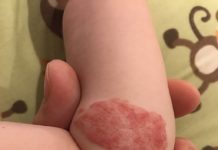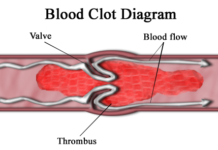By Danielle McCormick and Cherish Parker; Farnsley Middle School (Louisville, KY) Teacher: Marsha Buerger
McCormick, co-author Danielle’s cousin, was 11 when she was diagnosed with Seasonal Affective Disorder (SAD). One day she began acting strange and, out of the blue, she decided she didn’t want to play volleyball anymore. Her mom knew something was wrong because she had been playing volleyball since she was six!! Also, she was caught crying in her room multiple times before her mom had enough. She was then taken to a psychiatrist and was diagnosed with SAD.
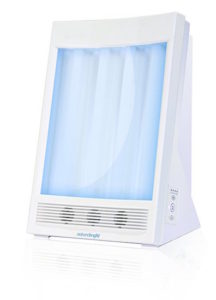
“You do not want SAD! It’s the worst, and I hope children won’t have to go through these kinds of things in the future,” says McCormick.
According to MedlinePlus, a part of the U.S. National Library of Medicine, SAD is a type of depression that comes and goes, depending on the season. In most cases SAD begins in the fall and leads into the winter, but also can start in the spring-summer. SAD usually begins and ends at the same time each year. If you’ve noticed that you have felt depressed during the winter or fall, but felt much better in the spring or summer, you might want to get tested for SAD. McCormick had SAD in the winter, so she would normally just stay in the house all day while everyone else was going out to play.
The Mayo Clinic states that Winter Onset SAD is a condition that is caused by the reduced level of sunlight in the fall and winter. If there’s little exposure to sunlight it may disrupt the body’s inner clock, which leads to depression. The body’s level of melatonin plays a role in your sleep pattern. Melatonin is a hormone produced by the brain that is at its highest level at bedtime when it is dark and decreases when it is light.
Summer onset SAD is sometimes called summer depression where just the change of season disrupts the biological clock and causes depression. As of now there is no specific way to prevent SAD from happening, but you can take steps early to keep it from getting worse over time.
According to NIH.gov, about 6.7% of adults in 2015 have depression. Also children between the ages of 12-17 have depression 3x the amount of adults worldwide.
The symptoms of SAD, according to Webmd.com, are feeling depressed a lot, feeling hopeless or worthless, losing interest in things you once loved, not being able to sleep well. Depending on your season of being depressed, whether spring or fall, you can have major weight loss or weight gain. Those are only the mild symptoms. The more severe ones are feeling suicidal, having low energy, not wanting to eat at all (starving yourself), and getting irritated and or aggravated easily. However, these symptoms are easy to treat.
To treat SAD, there is light therapy, and medicine. According to the Mayo Clinic, light therapy is a treatment where you sit or work near a light therapy box. The box gives off a bright light that resembles natural sunlight. Light therapy affects the brains chemicals, which affects your mood and sleep.
According to Mayo Clinic, a type of medicine that can be used to treat SAD is a supplement that is an anti-depressant treatment using the extended-release version of the anti-depressant bupropion, which helps prevent SAD from occurring. However, according to Mayo Clinic, these drugs can cause maniac reactions, so there is a need to get psychotherapy while using them.
McCormick did not take any medications for SAD, but she did have to use light therapy. She stated, “You get used to it after a while, but if light is shining for too long, my eyes will start to burn.” She says that it seemed to work as soon as she began light therapy but if she didn’t do it for a while then started back up, it felt as if she was starting all over again.
If you think you may have SAD, you might want to get a physical exam, lab test, or psychological evaluation. Medicinenet.com states that a physical exam is where your doctor will ask questions about your health, because in some cases depression can lead to a physical health problem. A lab test is usually a blood test of the thyroid to make sure its working properly. Lastly, psychological evaluation is when your doctor or mental health provider asks questions on how you’re doing, your symptoms, etc. It’s important you get tested before you take any treatments because if you end up not actually having SAD, you could have a lifetime illness. Many people with SAD will meet the point to where they don’t need to use any treatments, because their symptoms have gone away.
SAD is very serious. It has some complications, such as insomnia. Insomnia is a sleep disorder that is common with adults. It causes you to not be able to fall asleep. If you do end up going to sleep, it wakes you up shortly after and not be able to go back to sleep. It’s hard to deal with, and should be taken care of very fast. Luckily, McCormick did not show any signs of insomnia.
McCormick is now 20 years old and she does not have SAD anymore. She also doesn’t have any treatments and isn’t on any medications for SAD. She is doing much better with her people skills and hasn’t had an “episode”.
“I think this is something that absolutely no one should have to go through,” she says. “And I’m glad it’s over with now.”

This work is licensed under a Creative Commons Attribution-NonCommercial-NoDerivs 3.0 Unported License


